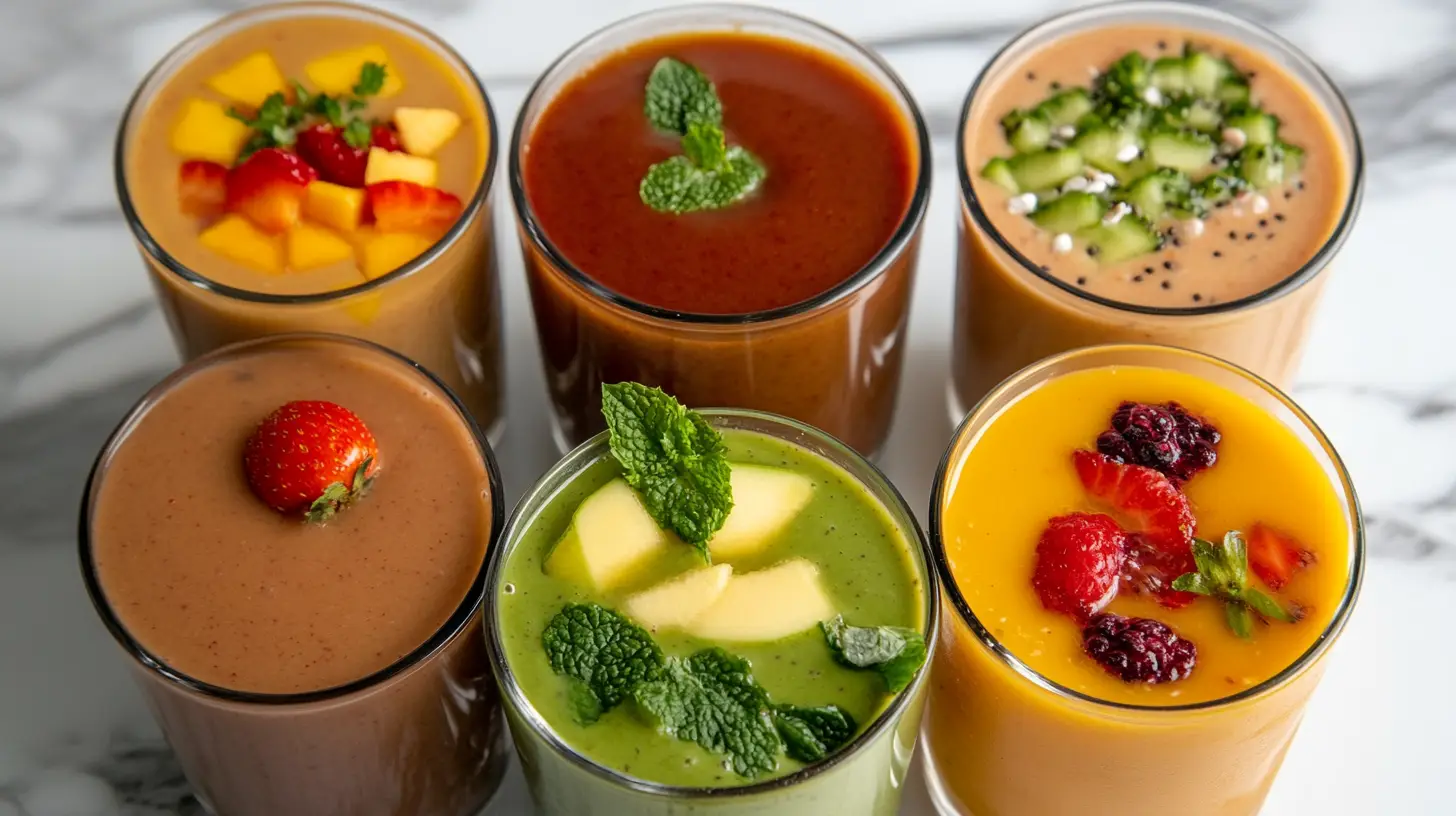Table of Contents
Why Juicing Recipes? More Than Just a Trend
Imagine this: a vibrant glass of fresh juice, bursting with antioxidants, vitamins, and life itself. Every sip fuels your body, reawakens your senses, and drowns fatigue in a flood of nutrients.
Juicing recipes aren’t just about throwing fruits and veggies into a machine. It’s a science, an art, and—if done right—a game-changer for your health. People swear by it for weight loss, digestion, immunity, and detoxification. But here’s the deal: juicing can either be your ultimate health weapon or a sugar-loaded mistake. The key? Knowing the right recipes, ingredients, and techniques.
If you love nutrient-packed drinks, you might enjoy this Carajillo Recipe—a bold, espresso-infused classic!
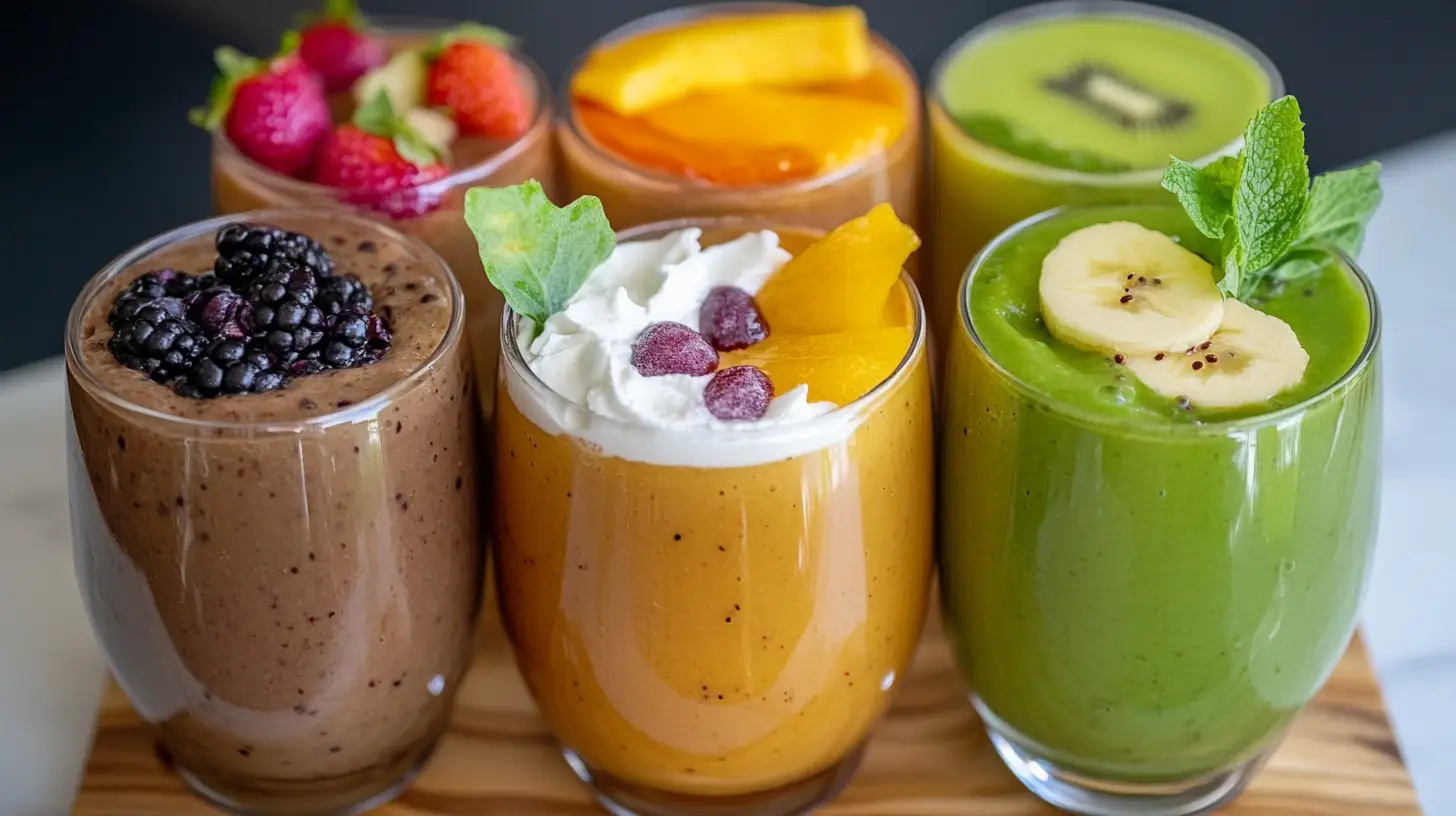
The Power of Juicing Recipes: What Happens Inside Your Body?
Fresh juices act like liquid nutrition bombs. They deliver instant nourishment without making your digestive system work overtime. Let’s break it down:
- Boosts Immunity: Your body absorbs vitamin C, polyphenols, and flavonoids faster than you can say “antioxidants.”
- Aids Digestion: Fresh enzymes from fruits and veggies support gut health and nutrient absorption.
- Detoxifies the Liver: Ingredients like beets and lemon flush out toxins lurking in your system.
- Supports Weight Loss: Nutrient-dense but low in calories? A win-win for your metabolism.
Need a more targeted health shot? Try this Immunity Shots Recipe for an extra wellness boost!
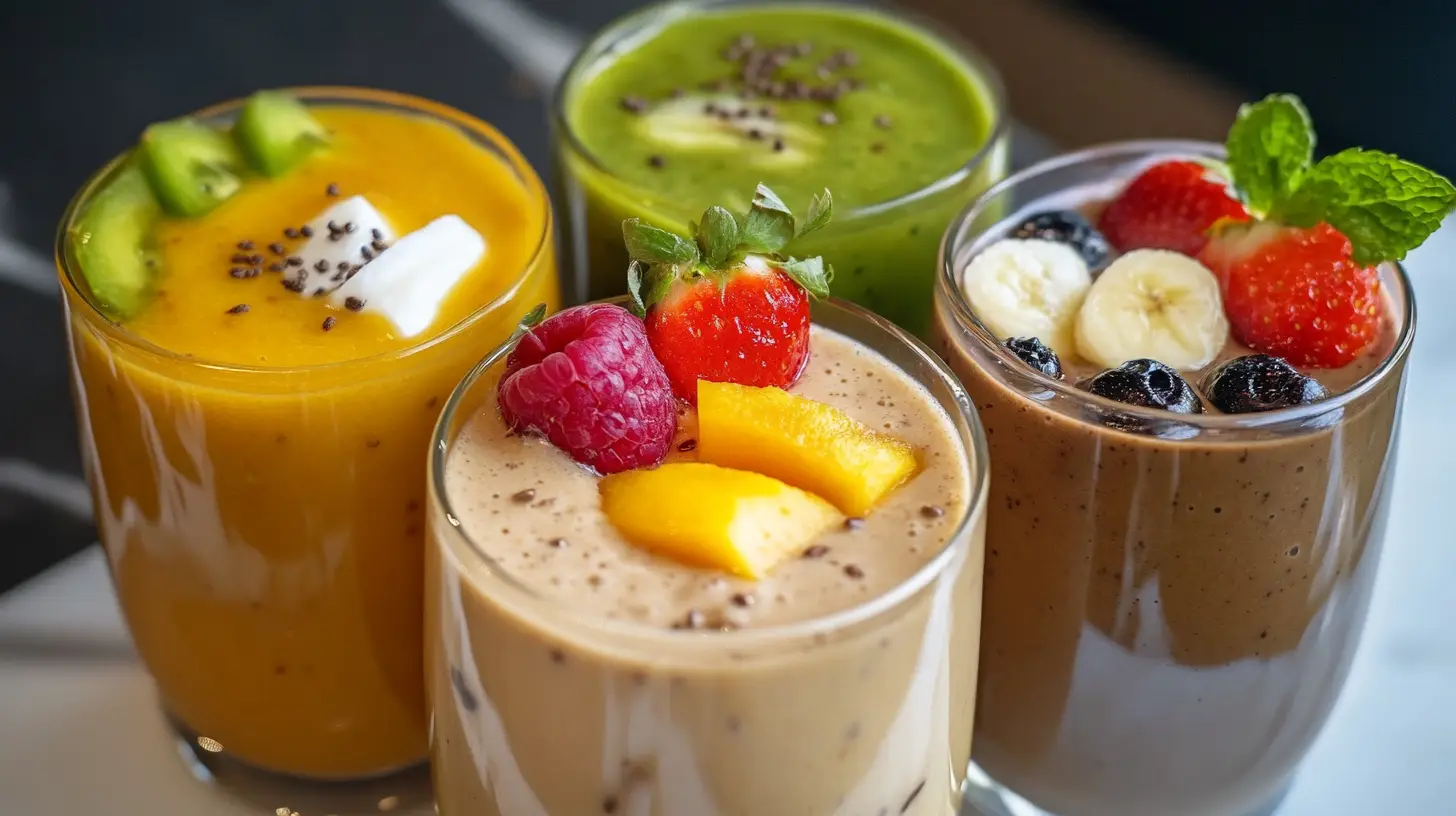
Essential Juicing Gear: Picking the Right Tools
You could juice with a blender, a strainer, and sheer determination, but let’s be real—having the right equipment makes life easier.
Juicers: Centrifugal vs. Masticating
- Centrifugal Juicers: Fast, efficient, and perfect for beginners. But heat and oxidation? They might steal some nutrients.
- Masticating Juicers (Cold Press): Slower but retains maximum vitamins with a richer, smoother juice.
Blender vs. Juicer: The Fiber Debate
- Juicers remove fiber, delivering a nutrient-packed, easily digestible drink.
- Blenders keep fiber intact, making thicker, gut-friendly drinks.
Want to explore gut-healthy food? Cottage Cheese Recipes offer high-protein, digestion-friendly meal ideas!
The Best Ingredients for Juicing Recipes
A great juice isn’t just about taste—it’s about balance. The right mix of fruits, veggies, and superfoods can create a drink that’s as delicious as it is powerful.
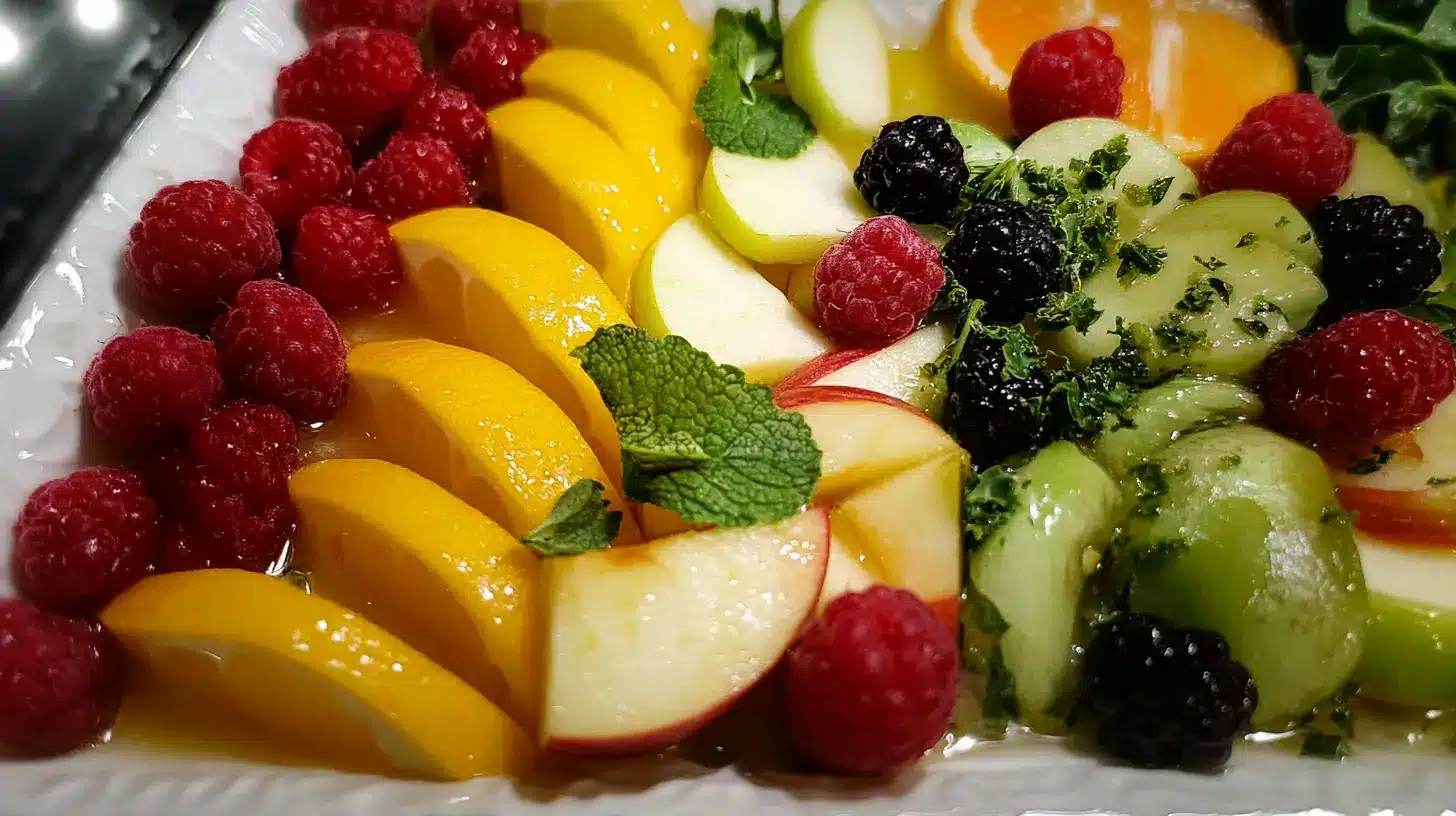
Best Fruits for Juicing Recipes
- Apples: Natural sweetness + digestive benefits.
- Citrus (Oranges, Lemons, Grapefruit): Vitamin C overload.
- Berries: Antioxidant-packed with low sugar impact.
Best Vegetables for Juicing Recipes
- Carrots: Vision, immunity, and a touch of sweetness.
- Beets: Detox powerhouse.
- Kale & Spinach: Iron, folate, and deep green goodness.
Superfoods & Boosters
- Ginger: Digestion, inflammation control, and a spicy kick.
- Turmeric: Anti-inflammatory and immunity-boosting magic.
- Mint: Freshness, flavor, and gut-calming properties.
Do you love functional drinks? Try Dirty Soda Recipes for a fizzy, flavorful treat!
Equipment You Need for Juicing Recipes Success
Investing in the right equipment makes all the difference between a smooth, nutrient-packed juice and a frustrating, pulpy mess. Whether you’re a beginner or an experienced juicer, choosing the right tools ensures maximum juice yield, nutrient retention, and convenience.
Types of Juicers: Centrifugal vs. Masticating
Centrifugal Juicers (Fast & Convenient)
- Works by spinning fruits and vegetables at high speeds.
- Best for: Quick juicing with minimal prep time.
- Pros: Affordable, fast, and easy to use.
- Cons: Generates heat, which may reduce some nutrients; less efficient with leafy greens.
Masticating Juicers (Slow & Nutrient-Rich)
- Uses a slow, grinding mechanism to extract juice.
- Best for: Maximum nutrient retention and higher juice yield.
- Pros: Retains more vitamins, works well with leafy greens, and produces less foam.
- Cons: Slower and typically more expensive.
Blenders: An Alternative to Juicers?
If you prefer fiber-rich drinks, a high-powered blender is an excellent alternative. Unlike juicers, blenders keep the pulp intact, which helps with digestion, satiety, and gut health. However, blended juices tend to be thicker and require more liquid for smooth consistency.
Storage Options: Keeping Juice Fresh
Freshly made juice starts losing nutrients quickly, so proper storage is crucial.
✔ Glass Bottles with Airtight Lids – Prevents oxidation and preserves freshness.
✔ Mason Jars – A great option for short-term storage (up to 24 hours).
✔ Vacuum-Sealed Containers – Slows down oxidation for longer shelf life.
Want to pair your fresh juice with a nutrient-dense snack? Check out these Cottage Cheese Recipes for a protein-packed complement to your juicing routine! 🍏🥕
7 Must-Try Juicing Recipes
Juicing is not only a delightful way to enjoy fresh fruits and vegetables but also a fantastic method to support your health and well-being. Whether you’re looking for a detoxifying cleanse, an immunity boost, or a natural energy lift, these carefully crafted recipes will help you get the most out of every sip.
Green Detox Juice 🌿
This refreshing juice is packed with chlorophyll-rich greens to aid in cleansing the body and improving digestion.

Ingredients:
- 1 cup kale
- 1/2 cucumber
- 1 green apple
- 1/2 lemon, peeled
- 1-inch ginger root
- 1 cup water (optional for dilution)
Instructions:
- Wash and chop all ingredients.
- Juice each ingredient, starting with the leafy greens.
- Stir well and serve immediately.
Looking for more anti-inflammatory meal ideas to pair with your juice? Explore AIP Recipes for nourishing, gut-friendly dishes!
Immunity Booster Juice 🍊
A vibrant blend of citrus and ginger, this juice is a powerhouse of vitamin C, antioxidants, and immune-supporting nutrients.
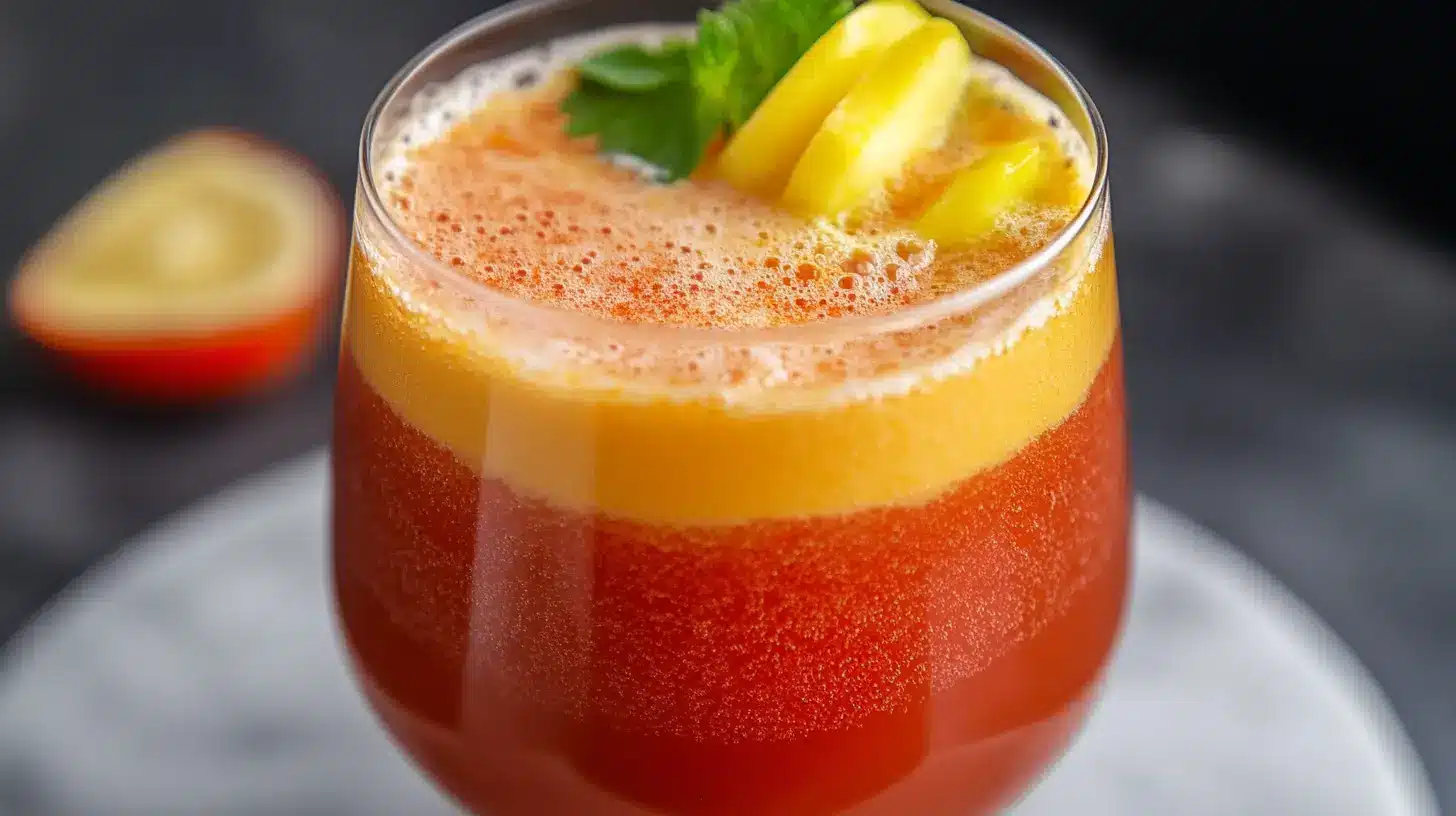
Ingredients:
- 2 oranges, peeled
- 1/2 grapefruit, peeled
- 1/2 lemon, peeled
- 1-inch ginger root
- 1 carrot, for extra beta-carotene
Instructions:
- Juice all ingredients together.
- Stir well and enjoy immediately for the best nutrient absorption.
For a more targeted immune boost, try this Immunity Shots Recipe for a concentrated dose of wellness!
Weight Loss Juice 🥒
Low in calories but high in hydration and metabolism-boosting properties, this juice is an excellent addition to any weight management plan.
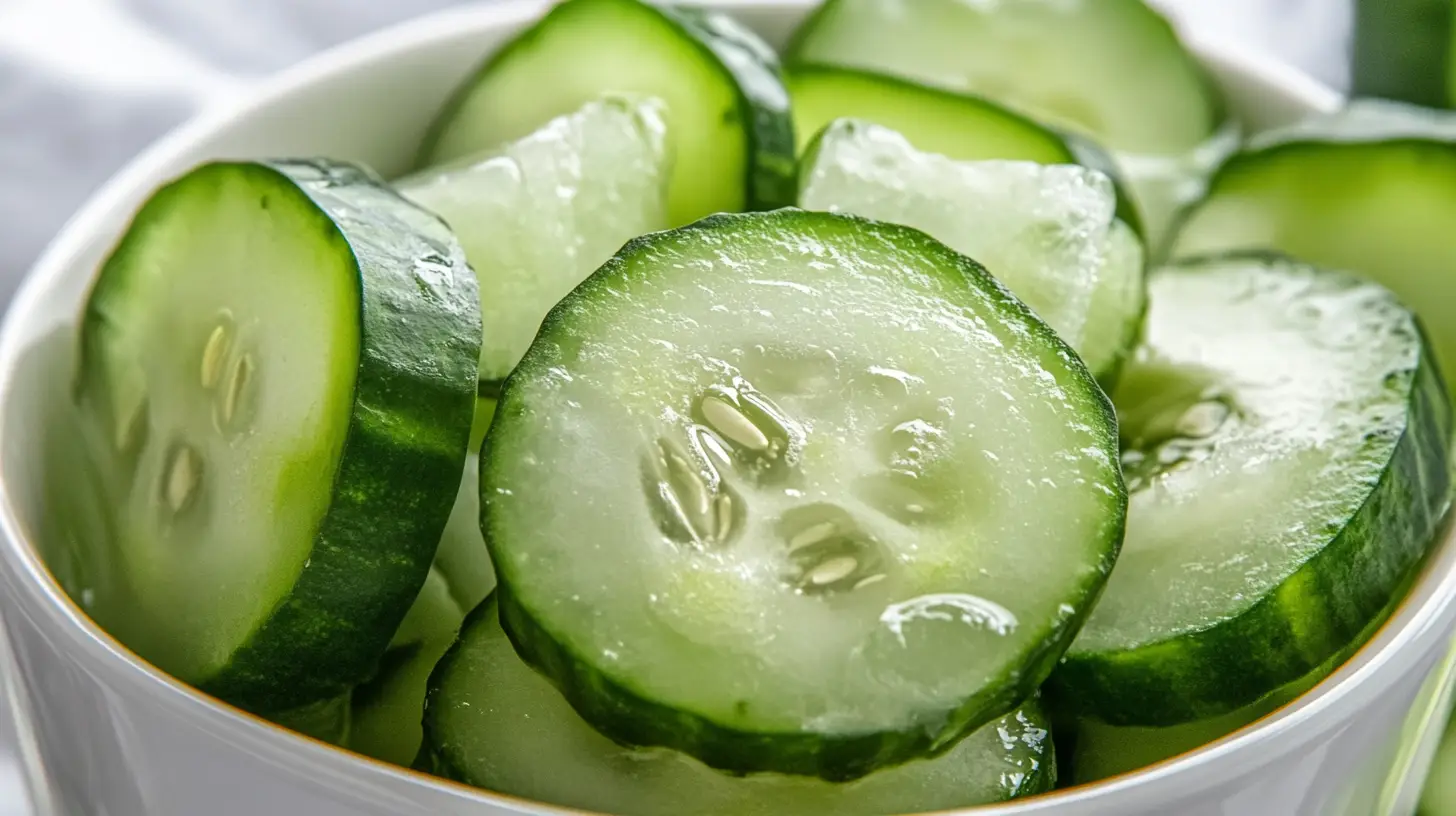
Ingredients:
- 1 cup celery
- 1 cucumber
- 1/2 lemon, peeled
- 1/2 green apple
- 1-inch ginger root
Instructions:
- Juice all ingredients.
- Stir well and serve immediately.
Pairing this juice with high-protein, low-calorie meals can enhance weight loss results. Try these Cottage Cheese Recipes for a satisfying and nutritious combination!
Anti-Inflammatory Juice 🌱
This golden-hued juice is packed with turmeric, ginger, and pineapple, known for their anti-inflammatory and digestive benefits.

Ingredients:
- 1 cup pineapple
- 1-inch turmeric root (or 1/2 tsp ground turmeric)
- 1-inch ginger root
- 1/2 lemon, peeled
- 1 carrot
Instructions:
- Juice all ingredients.
- Stir and enjoy!
Looking for another anti-inflammatory beverage? Check out Dirty Soda Recipes for a refreshing, gut-friendly treat!
Energy-Boosting Juice ⚡
A bright, invigorating juice that naturally enhances energy levels thanks to beets, carrots, and apples.
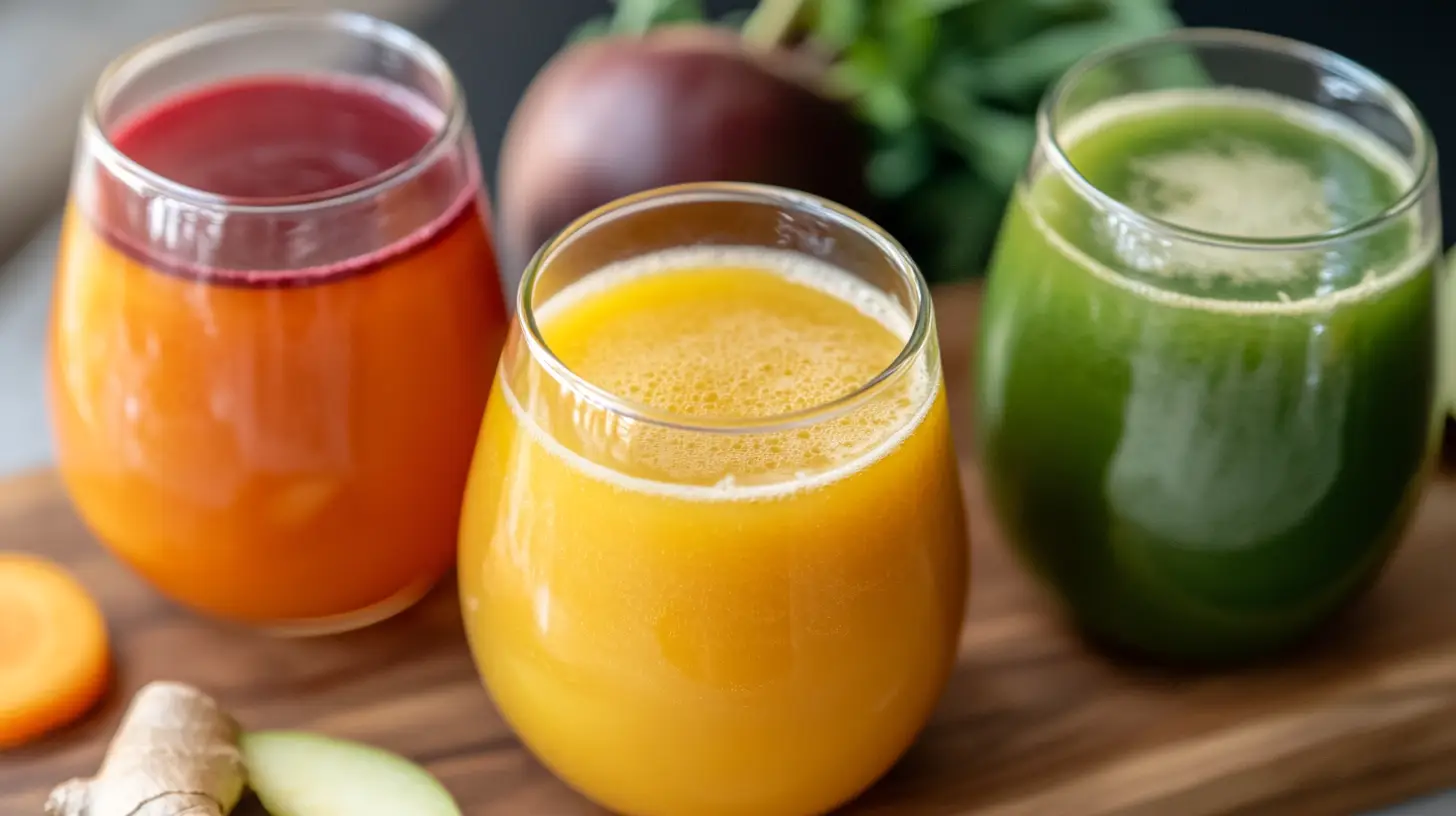
Ingredients:
- 1 beetroot
- 2 carrots
- 1 green apple
- 1-inch ginger root
Instructions:
- Wash and chop all ingredients.
- Juice together and serve fresh.
For more energizing drinks, consider trying Carajillo Recipe, a bold, coffee-based classic!
Skin Glow Juice ✨
This hydrating juice is rich in antioxidants, collagen-supporting nutrients, and vitamin A to promote healthy, glowing skin.
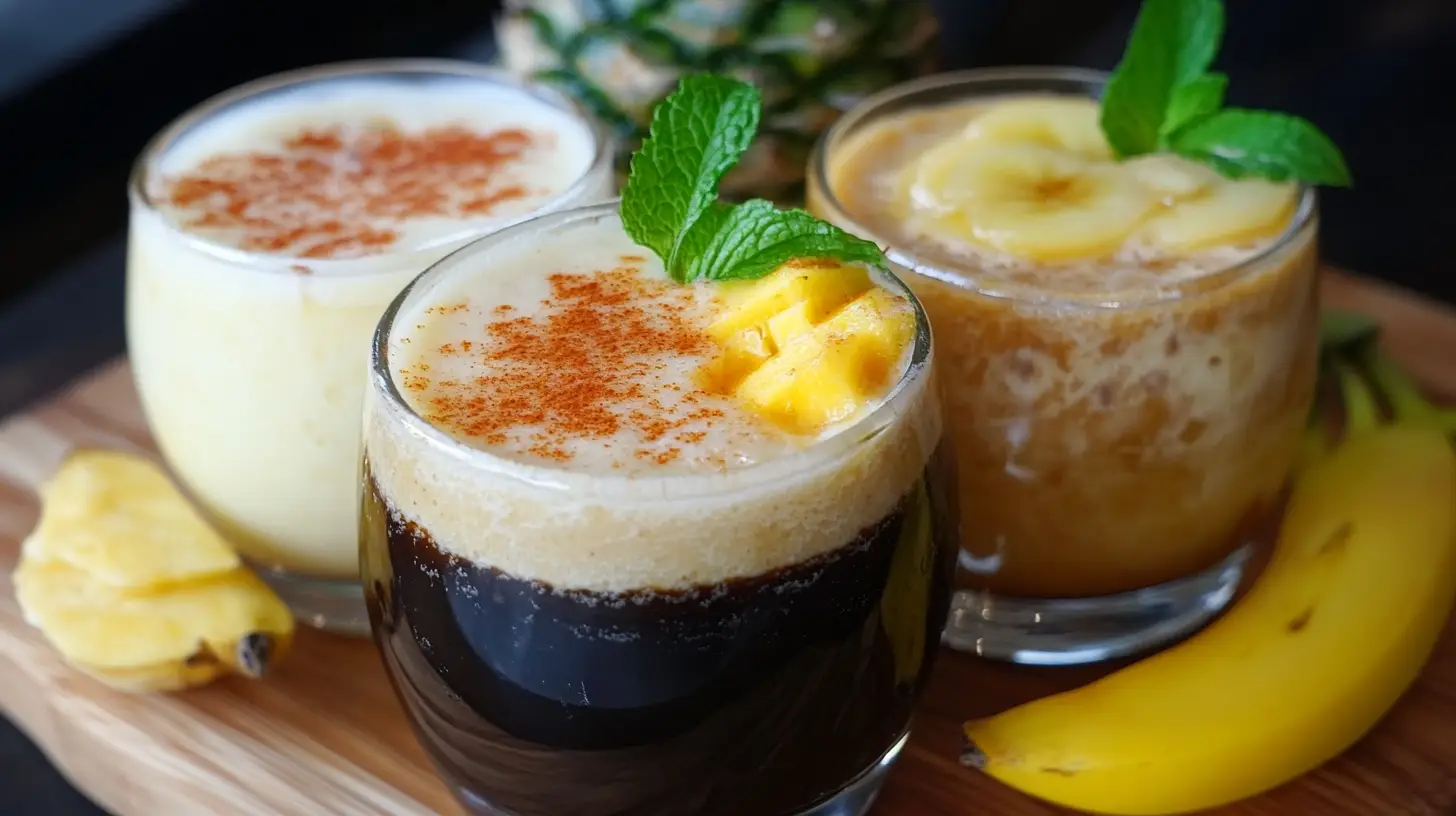
Ingredients:
- 1/2 cucumber
- 1/2 cup strawberries
- 1/2 orange, peeled
- 1 carrot
- 1/2 lemon, peeled
Instructions:
- Juice all ingredients together.
- Stir and drink immediately for the best skin-loving benefits.
Want to nourish your skin from the inside out? Try Hailey Bieber’s Smoothie Recipe for a celebrity-approved beauty boost!
Digestion Support Juice 🍍
Pineapple and mint work together to soothe the digestive system and support gut health.
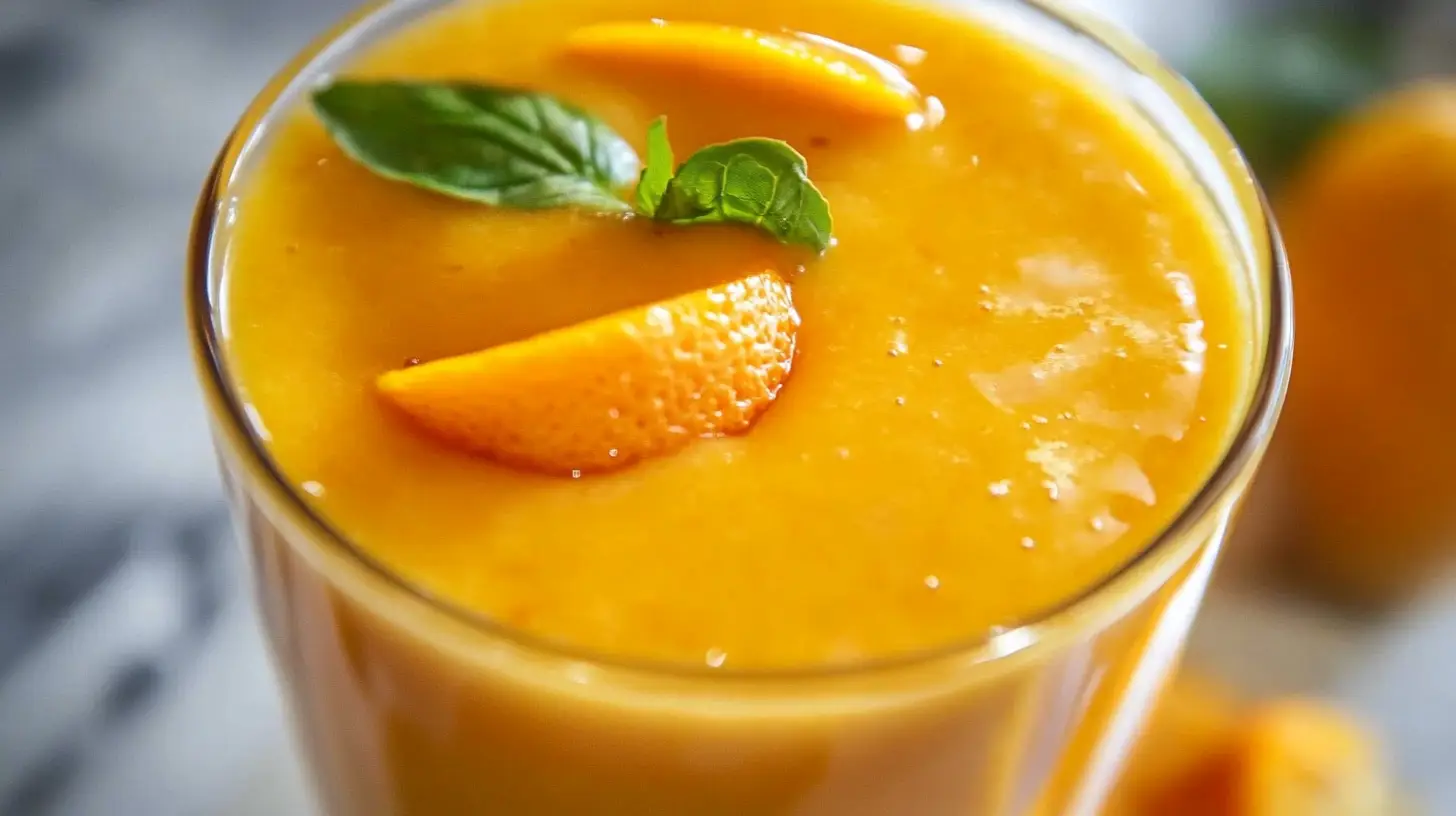
Ingredients:
- 1 cup pineapple
- 1/2 cucumber
- 5-6 mint leaves
- 1-inch ginger root
Instructions:
- Juice all ingredients.
- Stir and enjoy immediately.
Pairing this juice with fermented or probiotic-rich meals can further aid digestion. Check out Cottage Cheese Recipes for a gut-friendly pairing!
Juicing Recipes Tips for Beginners
Starting your juicing recipes journey can be exciting, but it’s easy to make a few missteps along the way without the right approach. To ensure you get the most out of your fresh juices—both in flavor and nutrition—here are some essential tips, and best practices for successful juicing.
Best Practices for Juicing Effectively
✔ Choose High-Quality, Fresh Ingredients – Opt for organic produce whenever possible to minimize pesticide exposure and maximize nutritional value.
✔ Juice Leafy Greens First – If using a centrifugal juicer, juice soft greens like spinach and kale first, then follow with firmer ingredients like apples or carrots to extract every drop.
✔ Alternate Ingredients for Maximum Yield – To improve juice extraction, alternate between soft and hard ingredients (e.g., leafy greens followed by a cucumber or carrot).
Storage Tips: Keeping Your Juice Fresh
- Use Glass Bottles with Airtight Lids – This prevents oxidation and keeps your juice fresher for longer.
- Refrigerate Immediately – Juice should be consumed within 24-48 hours for the best nutrient retention.
- Fill Containers to the Top – Reducing air exposure slows down oxidation, preserving freshness.
If you’re looking for more delicious homemade drinks, try Dirty Soda Recipes for a refreshing, flavorful twist!
By following these tips, you’ll enjoy fresh, nutrient-rich juices without common beginner pitfalls. Happy juicing! 🥕🍏😊
Common Juicing Recipes Mistakes & How to Avoid Them
- Overloading on Fruit
Sure, it tastes great. But fruit-heavy juices spike blood sugar, leading to energy crashes. Balance is key—pair fruits with greens!
- Skipping Fiber Completely
Juicing removes fiber, but you can mix some pulp back in for gut health.
- Storing Juice Incorrectly
Juices lose nutrients fast. Store them in airtight glass bottles and drink within 48 hours.
Love making your own drinks? Check out Hailey Bieber’s Smoothie Recipe for a trendy, nutrient-packed alternative!
FAQs About Juicing Recipes
What Should Not Be Juiced?
While juicing offers a fantastic way to increase nutrient intake, not all ingredients are suitable for the juicer. Certain foods can damage your machine, produce unpleasant flavors, or fail to yield much juice.
🚫 Avoid these ingredients in your juicing routine:
- Bananas & Avocados – Their creamy texture lacks juice and works better in smoothies, like in this Hailey Bieber Smoothie Recipe.
- Whole Citrus Peels – While zest adds flavor, too much peel can make juices overly bitter.
- Raw Cruciferous Vegetables in Excess – Kale, broccoli, and cabbage can slow thyroid function if consumed in large amounts. Moderation is key!
- Pits & Seeds from Stone Fruits – Cherry, peach, and apricot pits contain compounds that may release toxins. Always remove them first.
- Raw Potatoes – They can taste unpleasant and may contain harmful compounds if not properly prepared.
For those looking to incorporate gut-friendly ingredients, Cottage Cheese Recipes provide a high-protein, digestion-friendly pairing for juices!
What Is the 80/20 Rule in Juicing?
The 80/20 rule in juicing is a simple but effective guideline to create nutrient-dense, low-sugar juices. It suggests:
🥬 80% Vegetables – Leafy greens, celery, cucumbers, and carrots should form the bulk of your juice. These ingredients add essential vitamins, minerals, and fiber without spiking blood sugar.
🍏 20% Fruits – Use fruits like apples, berries, or citrus for natural sweetness without excessive sugar intake.
By following this approach, you maximize nutrient density while keeping sugar levels in check. If you’re interested in anti-inflammatory and nutrient-packed recipes, take a look at these AIP Recipes to complement your juicing plan!
What Is the Healthiest Juice to Juice?
The healthiest juice is one that balances vitamins, minerals, and antioxidants while keeping sugar content low. The best options include:
🥬 Green Juice (Nutrient Powerhouse)
- Kale, spinach, celery, cucumber, green apple, and lemon.
- Rich in iron, vitamin C, and chlorophyll to boost energy and detoxification.
🫐 Berry Antioxidant Juice
- Blueberries, blackberries, raspberries, and a splash of pomegranate.
- High in antioxidants, vitamin K, and fiber to support heart health.
🥕 Carrot-Turmeric Anti-Inflammatory Juice
- Carrots, ginger, turmeric, and oranges.
- Packed with beta-carotene and anti-inflammatory compounds.
For a fun twist on healthy drinks, check out Dirty Soda Recipes—a refreshing alternative to plain water and soda!
What Are 5 Cons of Juicing?
While juicing recipes have incredible benefits, it also comes with some drawbacks. Here are five important considerations:
- Loss of Fiber – Juicing removes the fiber found in whole fruits and vegetables, which is essential for digestion and satiety. For fiber-rich meals, try Cottage Cheese Recipes alongside your juice!
- 2. Potential Blood Sugar Spikes – Fruit-based juices, especially those high in pineapple, mango, or grapes, can lead to rapid sugar absorption and energy crashes.
- 3. Short Shelf Life – Fresh juice oxidizes quickly, meaning nutrients degrade within hours. Storing it properly in airtight glass bottles can help.
- 4. Costly Over Time – Buying large amounts of organic produce and maintaining a quality juicer can become expensive.
- 5. Not a Complete Meal – Juice lacks protein and healthy fats, which are crucial for sustained energy. Pairing it with AIP Recipes can provide a more balanced diet.
Conclusion: Start Your Juicing Journey Today
Incorporating fresh, homemade juices into your daily routine is one of the simplest and most enjoyable ways to support your health. Whether you’re looking to boost your immune system, improve digestion, or simply add more vitamins and minerals to your diet, juicing recipes offer a delicious and effective solution.
The key to success lies in balance and consistency. By choosing the right ingredients, maintaining a variety of nutrient-rich recipes, and avoiding common mistakes, you can make juicing recipes a sustainable habit that nourishes your body and enhances your well-being.
If you’re looking for a perfect protein-packed pairing with your fresh juice, explore these Cottage Cheese Recipes for satisfying and nutritious meal ideas.
So why wait? Grab your favorite fruits and vegetables, fire up your juicer, and start creating vibrant, health-boosting drinks today. Your body—and taste buds—will thank you! 🥤😊
Would you like more personalized juicing tips? Feel free to ask! 💚

